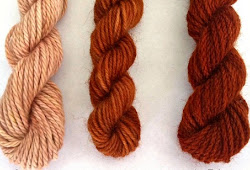Now You Know Physical and Chemical Properties of Wool Fiber
Monday, 21 January 2019
Edit
Physical and Chemical Properties of Wool Fiber
Mustaque Ahammed Mamun
Quality Assurance Officer,
Lamisa Spinning Ltd. Tongi, Gazipur
Cell: +8801723300703
Email: mamuntex09@gmail.com
Quality Assurance Officer,
Lamisa Spinning Ltd. Tongi, Gazipur
Cell: +8801723300703
Email: mamuntex09@gmail.com
Wool Fiber:
Wool is a protein fiber and it is formed in the skin of sheep and hence it is called animal fiber. It is one of the major animal fiber. Wool fibers are hygroscopic and the most hydrophilic of textile fibers. Wool fiber also known as protein fiber. Wool’s protein known as keratin. Keratin is made up of amino-acids joined by peptide linkages. It has several qualities that distinguish it from hair or fur. Wool fiber is crimped, it is elastic, and it grows in staples (clusters). It has been used as a textile fiber for thousands of years.
 |
| Wool fiber |
For processing wool fiber, we should know about properties of wool fiber. Now I have discussed the following properties of wool fiber.
- Physical properties of wool fiber
- Chemical properties of wool fiber
Related:
- Specific Gravity: 1.31
- Length : 35 to 250 mm
- Color: The color of wool fiber could be white, near white, brown and black.
- Flame reaction : Odor of burnt horn
- Luster: Luster of course fiber is higher than fine fiber.
- Moisture Regain: 13-16% , very absorbent, decrease strength when wet, seem warmth, will shrink in washing.
- Electrostatic reaction: Highly electrostatic at dry conditions
- Strength: Tenacity dry =1.35 g/d, Wet = dry 0.69 weak (Due to few H-bond)
- Elasticity: Breaking extension – 42.5 %, Recovery % – 69 at 5%
- Elongation at break: Standard elongation is 25 – 35% and 25 – 50% in wet condition.
- Feel or Hand: Soft.
- Resiliency: Excellent (due to crimp)
- Abrasion resistance: Good.
- Dimensional stability: Bad (For tendency of felting).
- Effect of Heat: Heat affects the wool fiber greatly.
- Effect of Sun Light: The fibers become discolored and develop a harsh feel.
- Effect of Acids: Wool is attacked by hot concentrated sulphuric acid and decomposes completely. It is in general resistant to mineral acids of all strength even at high temperature though nitric acids tend to cause damage by oxidation.
- Effects of Alkalis: The chemical nature of wool keratin is such that it is particularly sensitive to alkaline substances. Wool will dissolve in caustic soda solutions that would have little effects on cotton. Strong alkaline affect on wool fiber but weak alkaline does not affect wool.
- Effect of Resistance to Compression: Resistance to compression values are useful in assessing the suitability of wool for specific end uses. Resistance to compression (R to C) is the force per unit area required to compress a fixed mass of wool to a fixed volume. Resistance to compression is related to fiber diameter and the form and frequency of crimp.
- Effect of Resilience: Wool fibers can be stretched up to 50 percent of their original length when wet and 30 percent when dry.
- Effect of Organic Solvent: Wool does not affect in organic solvents.
- Effects of Insects: Wool affected by insects.
- Effect of bleach: Chlorine bleach is ordinary harmful to the wool. KMnO4, Na2O2 are utilized for bleaching.
- Effect of Micro Organism: It is affected by mildew if it remains wet for long time.
- Dyeing ability: Wool absorbs many different dyes deeply, uniformly and directly without the use of other chemicals. Because of this ability, wool is known for the beautiful, rich colors that can be achieved.
- Effect of Colorfastness: Like cotton wool is easy to dye. Acid dyes, chrome and mordant dyes are utilized to dye this. The dye molecules are attracted into the amorphous areas of wool.
- Physical and Chemical Properties of Wool Fiber
- Dyeing of Wool with Onion Skin
- Wool Sorting Process
- What are the Impurities Present in Wool? How They can be Removed?
- An Overview of Wool Fiber
- Production Processes for Wool Yarns
- Carbonizing Process of Wool | Techniques of Wool Carbonizing
- Effects of Plasma Treatment on Wool
- What is Woollen and Worsted Yarns?
- Wool Glazing Machine | Process of Wool Glazing
- Wool Finishing Processes
- Characteristics of Wool Fabrics | Properties of Wool Fabrics
- Difference between Woolens and Worsteds Yarn
- Manufacturing of Worsted and Woolen Yarns
Sumber http://textilelearner.blogspot.com





